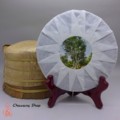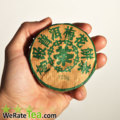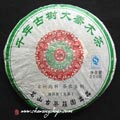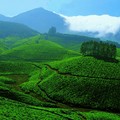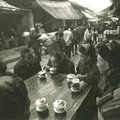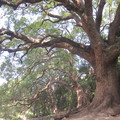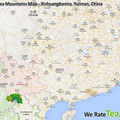Myanmar (Barma)
Tea by type
Tea by region
Tea by years and other
2016 Myanmar Jingdong Xiao Bing Cha 200g
 0 reviews
0 reviewsThe raw materials of this cake came from Jingdong, Myanmar, just west of the Xishuangbanna. The tea is not expensive but does not come by easily. Nowadays border tea is very popular on the market, Myanmar tea is very good to be used for blending. There is a particular recipe for "Lao Ban Zhang" is blend Myanmar tea with Naka and Lao Man E. It tastes a little bitter with rich aroma of mountain flowers. Mellowness with a pleasant finish, no astringent. This tea is...
2006 Myanmar Kokang Mei Hua Bing Raw Puerh Tea 100g
 1 review
1 reviewThis little cake come from border area with Myanmar from Kokang (果敢; pinyin: Guǒgǎn), area about 20km outside from China. Kokang county was part of China for long time and is famous for ancient tea gardens. Nowadays the is tea from this area sell to Chinese market as most border teas. Stored since 2006 in Kokang and this year (2015) sold to Kunming tea seller. This cake will surprise you with the quality and taste. Nice floral aroma, full body and thick,floral sweet with fast...
2012 Myanmar - Beyond The Small Mengsong Mountain Gushu Xiao Bing 200g
 1 review
1 reviewThe raw materials of this cake came from villages in Myanmar, its north border on small Mengsong mountain. Tea trees are about three hundreds years old and remain unmanaged. The natives living in isolated areas where transportation is difficult, they carry the tea on the backs and walk to the border. The tea is not expensive but does not come by easily.
Theme
Quotes
„Hui Gan 回甘, Hui Tian 回甜, Sheng Jin 生津, & Hui Yun 回韻…In literally term, Hui Gan, sometimes referred to as Hui Wei, is to reflect sweetly on a past event. Borrowing from the term 'to reflect', Hui Gan in tea is, simply put, a reflection on the sweetness of the tea - when one drink the tea, when the tea slides through the cavity of the mouth into the throat, there comes, after a short while, a sweetness that rises up from the throat. This sweetness is sometimes accompanied with a fragrance. Do not keep the upper and lower mouth pressed together when sipping tea, but create a cavity instead by lowering the jaw. Let the tea wash over the entire inside of the mouth, and then direct the tea to slide from the sides of the jaw into the throat. While holding the empty cavity, breathe out instead of in after you swallow the tea, there is warmth in the breath accompanied by a fragrance, and the same fragrance that rises up from the throat. This is Hui Gan.“
Latest posts
07.06.2025 @ 07:48:53 - lalo233:
The unforgiving landscapes of Arrakis in Dune: Awakening demand a mastery of combat....
07.06.2025 @ 07:48:50 - lalo233:
The unforgiving landscapes of Arrakis in Dune: Awakening demand a mastery of combat....
01.01.2016 @ 18:14:35 - Eternal Spring:
WeRateTea.com wish you all the best for 2016!...
07.12.2015 @ 09:07:02 - sypalino:
I decided to taste this tea 2 weeks after delivery. The cake is lightly pressed, so...
09.11.2015 @ 21:58:19 - Eternal Spring:
Comparison of 2013 Bada Pu-erh.sk with <a...
09.11.2015 @ 09:34:07 - Eternal Spring:
Lao Yu 2013 is now about 2,5 years old tea and out of this 1,5 year stored in Europe....
09.11.2015 @ 09:33:11 - Eternal Spring:
Comparison of all three Lao Yu is now done :)
15.10.2015 @ 11:06:37 - Eternal Spring:
2015 Chawangpu Collection – I can only tell, that all teas are very good :)
09.10.2015 @ 10:31:19 - Eternal Spring:
It was quite long and difficult tasting to make a decision… There is still quite...
24.01.2015 @ 16:55:57 - Eternal Spring:
WeRateTea.com wish you all the best for 2015!...
Tea by region
We will help you with tea selection.
Do you like quality loose tea?
We will help you to find the right one for you. Be inspired by tea ratings of other tea lovers. Rating stars could help you.


Review your cup of tea.
Review the tea you are drinking and help other tea lovers to find the right cup of tea.



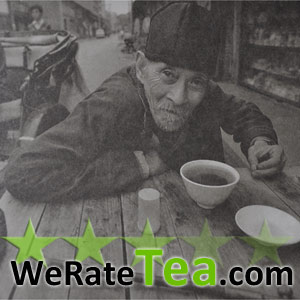


 Shops
Shops
